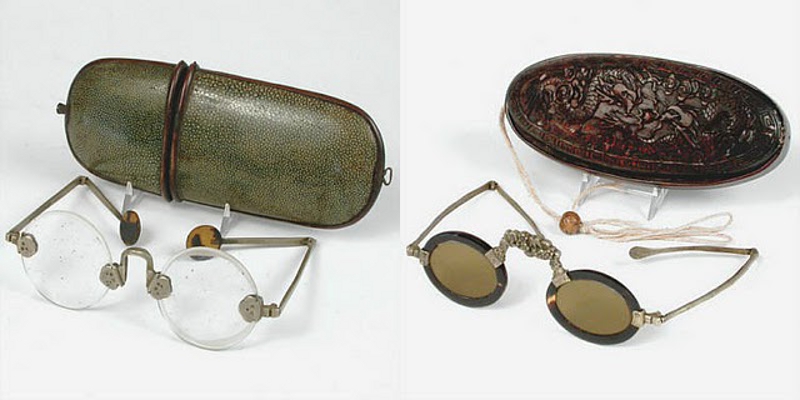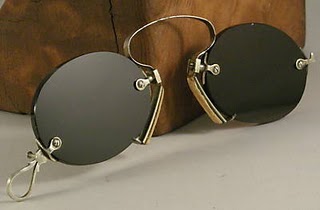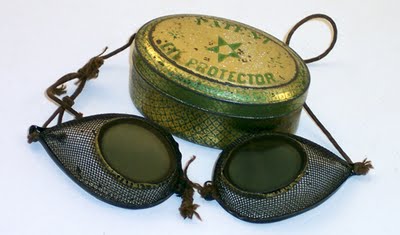We hope you enjoy the articles and short stories presented here, and will join Kate in her adventures for many years to come.
Upon request, you will receive an inscribed copy of Kate Tattersall Adventures in China with every donation of $10 or more plus shipping. Please use the Contact Page to provide your shipping address and we will reply with your total.
Eyeglasses in various forms date back to the 1200s. By the 1850s they had evolved into a wide array of styles and many of the wealthy enjoyed wearing intricate versions. These spectacles were made with many different materials. Some were corrective, some for protection, and some just decorative.

Rimless with tortoiseshell temple pads, and tinted with tortoiseshell frames
Most frames that have survived are of silver alloys, sometimes with gold. The spring wire arms people think of didn’t appear until the 1880s, previous to then arms were often hinged like the examples above, or just straight, or none as in the pince-nez (French for pinch-nose).
There were eyeglasses specifically made for certain uses. A good example would be shooting spectacles.

Shooting glasses with yellow smoked lenses in silver frames

Pince-nez with black lenses

Cinder glasses, 1850
With the ever growing popularity of rail travel in the 1840s cinder goggles were mass produced. Originally for the engineers, but then also for passengers because the cars didn’t have glass in the windows (third class didn’t even have roofs). Clothing sometimes caught on fire as coal sparks would blow in from the chimney. To get a hot cinder in your eye would certainly be painful. The highest class cars were the furthest back on the trains, and the first to receive glass in the windows.
When there was a fear of the glasses falling off, a strap or string would be used to secure them in place. Straps were made of leather or elastic.*
What did Kate Tattersall’s goggles look like? She wrote of having large bright eyes and cherishing them, and of wearing protective lenses often for shooting and to shield against dust. She described several different pairs as having a strap, being padded for comfort and seal, with smoky yellow to black lenses. Unfortunately we don’t have an example of them in our collection of family heirlooms.
If you would like to see more photos of eyeglasses from the 1800s, I can recommend this site:
http://www.eyeglasseswarehouse.com/index.html
* Thomas Hancock patented elastic fastenings for gloves, suspenders, shoes and stockings in 1820. By the 1850s it was used for almost everything we do today.

Tmanofctown
I had no idea that spectacles in the mid-1800s looked so strange.
Jaleesa Lonn
Hello there, I really liked your post. Nice glasses. Thanks!
Southern Belle
I love this site. Thanks!
Ellie
😉 Cheers!
Sierra Sue
I am a docent (history interpreter) at a state park. I need info regarding the type of eye glasses worn during the 1850’s.
Thank you for offering an additional site — I loved yours!
Aden
Great images 🙂